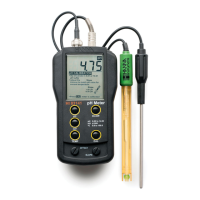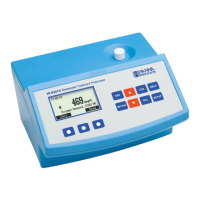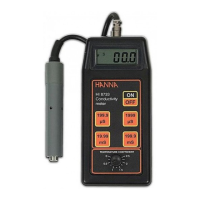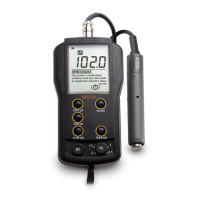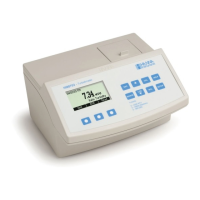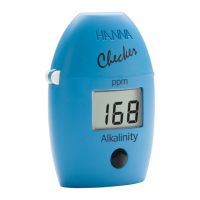13
13
GENERAL TIPS FOR AN ACCURATE MEASUREMENT
5. GENERAL TIPS FOR AN ACCURATE MEASUREMENT
The instructions listed below should be carefully followed to ensure best accuracy.
• Always cap the cuvettes to avoid spillage of the sample into the instrument.
• Always close the lid of the instrument during measurement.
• Keep the lid of the instrument closed when not in use to prevent dust or dirt entering.
• Place the instrument on a flat, rugged surface when taking measurements.
5.1. CUVETTE
The cuvette is part of the optical system and measurements can be affected by the glass imperfections,
dirt, dust, scratches, or fingerprints present on its surface.
5.2. CUVETTE HANDLING
• Any cuvette with visible scratches must be discarded.
• Always store the cuvettes in separate boxes or with separators between them to avoid scratches.
• Whenever a cuvette is placed into the instrument, it must be dry outside, free of fingerprints or
dirt. Wipe it thoroughly with HI731318 (tissue for wiping cuvettes, see Accessories Section) or a
lint-free cloth prior to insertion.
5.3. CUVETTE OILING
• For low turbidity readings (<1.0 NTU) the cuvettes should be oiled outside with the supplied
HI93703-58 Silicone oil. Use only one single drop of oil and then wipe the cuvette thoroughly
with a lint-free cloth.
5.4. SAMPLING TECHNIQUE
When taking turbidity measurements it is important to take a representative sample.
• Gently mix the sample before filling the cuvette.
• Samples should be analyzed immediately after collection because turbidity can settle or change
in time.
• Pay attention when working with cold samples that no condense is formed on the outside of the
cuvette. We recommend to work with samples at room temperature.
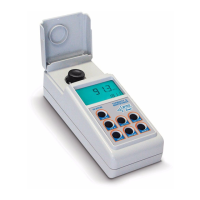
